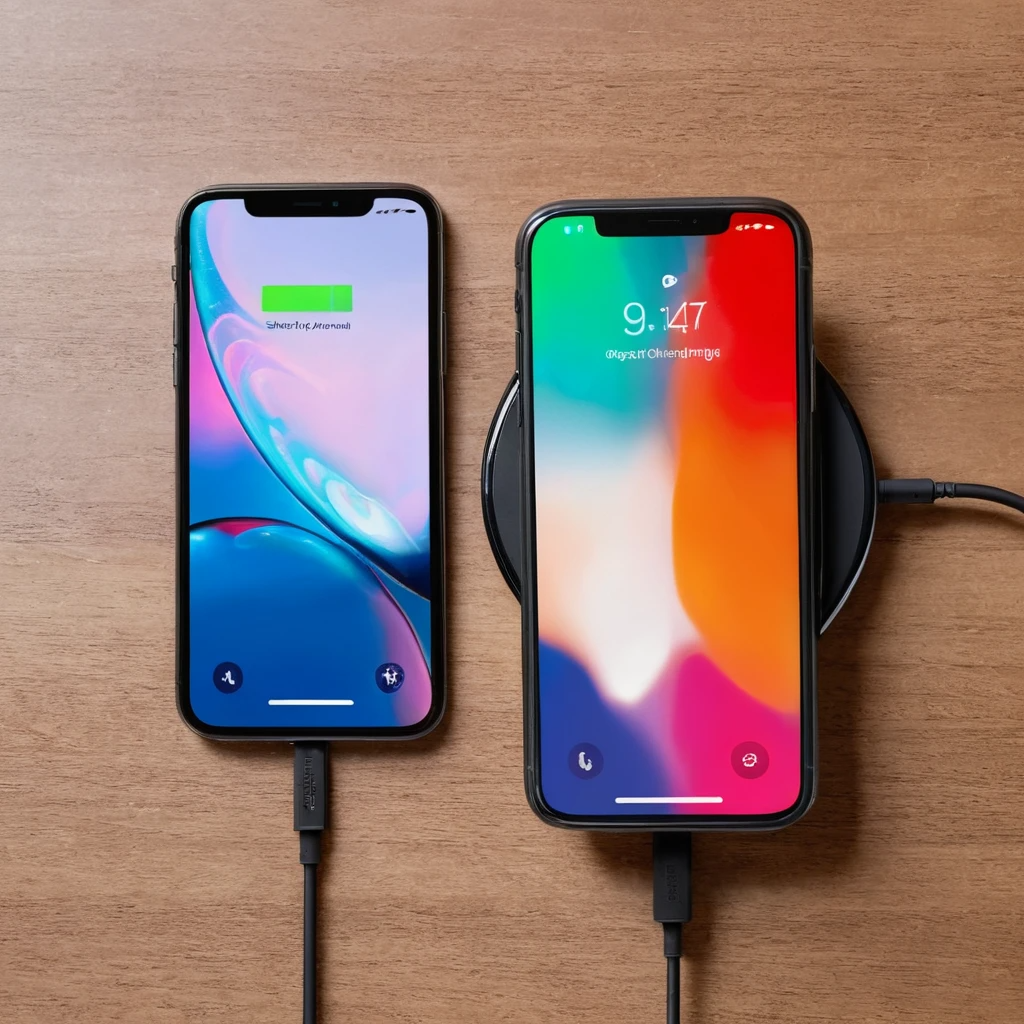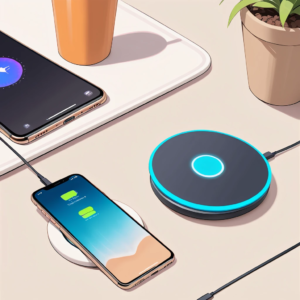Wondering if wireless or wired fast charging is better for your device? Explore the pros, cons, and which option is faster in this detailed comparison of wireless vs. wired charging.
Introduction
Ever wondered if wireless charging really lives up to its promises? Or if that tangled mess of wires could still be your best friend? Yeah, I’ve been there too. Whether it’s at home, the office, or out and about, we all know that feeling of grabbing our phones and hoping they’re juiced up. But with the rise of wireless chargers, it’s easy to wonder—should I ditch my cables for good, or is wired still the real MVP?
Let’s break it down, so you can make the right call when it comes to charging your devices wirelessly—whether you’re all about that wireless fast charging life or still team wired.
How Does Wired Fast Charging Work?
Okay, let’s start with the basics—how does wired fast charging even work? Well, when you plug in your phone or device, the charger pumps electricity through a cable to your phone, providing energy to charge the battery. Fast charging technology specifically refers to the ability of certain devices to accept higher voltage or current to juice up quicker.
For example, USB-C Power Delivery (PD) can give your phone or laptop a serious boost in no time. It can push up to 100W, meaning it’s capable of charging things like laptops and larger devices. Qualcomm Quick Charge, on the other hand, is more common in Android devices, offering 18W or more for rapid charging.
Pros:
- Speed: Wired fast charging can often reach speeds of 30 minutes to 1 hour to get to 50% charge, depending on your device.
- Reliability: No need to worry about alignment or position—just plug it in, and you’re good to go.
- Higher Power Output: Many wired chargers can deliver more power, so you can charge larger devices faster.
Cons:
- Cables Everywhere: It’s not the most convenient option if you want to charge without fiddling with cables.
- Mobility Restrictions: You’re stuck close to the outlet or charging port.
How Does Wireless Fast Charging Work?
Now, wireless charging—let’s talk about the magic. How does wireless charging work, really? Well, it’s based on electromagnetic induction. A wireless charger creates an electromagnetic field, and your device (like a phone) contains a coil that receives the energy and converts it into power to charge the battery.
With Qi wireless charging (the standard for most phones), the charging pad and your phone need to be aligned just right for it to work. If they’re even slightly off, the charging slows down or stops completely. Then there’s MagSafe wireless charging for iPhones, which is more reliable thanks to its magnetic alignment.
Pros:
- No Cables: Place your phone on the pad, and boom—it’s charging. Super easy and clean.
- Convenience: You can charge multiple devices on one pad without having to plug in anything.
- Cool Factor: Honestly, it just feels futuristic, doesn’t it? Charging without having to think about the cable.
Cons:
- Slower Speeds: Wireless charging speeds typically lag behind wired, making it a slower charging solution.
- Alignment Issues: Sometimes you’ll find yourself adjusting the phone or the pad to get it in the right spot.
- Heat Buildup: Some devices may heat up more with wireless charging pads, especially if the coil alignment isn’t perfect.
Speed Comparison: Wired vs. Wireless Charging
Let’s get down to the real question—which one charges faster? Spoiler alert: wired charging is typically faster—but how much faster? Well, it depends on the tech.
- Wired Fast Charging: For a quick comparison, a USB-C PD charger can charge an iPhone or Android phone to 50% in around 30 minutes, while Qualcomm Quick Charge 3.0 can do it even faster on certain Android models.
- Wireless Fast Charging: With Qi wireless charging, most phones can only manage around 10-15W of power, whereas wired could push up to 30W or more.
So, while wireless charging has gotten much better, it still lags behind wired when it comes to speed. If you need to juice up quickly and get out the door, wired charging is your best bet. But if you’re just looking to top off during the day while working or watching TV, wireless charging is a solid option.
Convenience Factor: Which One is Easier?
Ah, convenience—this is where wireless fast charging shines. I’ll be real with you, once I started using wireless charging, it was hard to go back to wired. It’s just so convenient. You can set your phone down on the charging pad while doing other things—no plugging, unplugging, or fighting with tangled cords.
Wired charging, though—it’s reliable, but you’ve gotta deal with cables. If you’re like me and constantly toss your phone on the nightstand or desk, you might find yourself tugging at the cord just to get it to reach. Not the end of the world, but it’s still a hassle when you’re in a rush.
Safety and Heat Concerns: Wired vs. Wireless
Now let’s talk about something a little less fun but equally important: safety and heat. Both wired and wireless charging come with their own heat management issues, but in different ways.
- Wired Charging: Because wired chargers push a lot of power to the device quickly, they can heat up. This is especially true with high-output chargers, like those used for laptops. However, they often come with built-in mechanisms to control overheating.
- Wireless Charging: On the flip side, wireless fast charging tends to run hotter because of the alignment factor. If your phone isn’t perfectly placed, the energy doesn’t transfer as efficiently, and that can cause some excess heat. Some newer chargers have built-in heat management, but it’s still something to be mindful of.
Cost and Device Compatibility
Here’s the thing: both wired and wireless charging setups come at different price points. Wired charging cables are relatively cheap, especially USB-C cables. But for wireless fast charging, you need to purchase a charging pad (some of which are pretty expensive).
Also, not every device supports wireless charging, and if it does, it may not support fast wireless charging. MagSafe chargers are specifically designed for iPhones, and Qi wireless chargers work with a broader range of devices.
Which One Is Better for You?
Here’s the deal: if you need speed and reliability, wired charging is your best bet. It’s perfect for getting a quick boost when you’re running short on time. However, if you value convenience and like the idea of charging without worrying about cables, wireless charging is the way to go.
In the end, it’s all about what works best for your routine. If you mostly charge overnight or at your desk, wireless fast charging could be a game changer. But if you’re always on the move and need your device charged fast, you might find wired charging is still the go-to.
Conclusion
At the end of the day, there’s no one-size-fits-all when it comes to charging. Both wired and wireless charging have their pros and cons. If you’re someone who values speed and efficiency, wired is your friend. But if you’re looking for a more relaxed, cable-free charging experience, wireless charging technology is hard to beat.
So, what about you? Are you still hanging onto that trusty charging cable, or have you made the jump to wireless charging pads? Share your experiences and thoughts in the comments below—I’d love to hear what works best for you!




